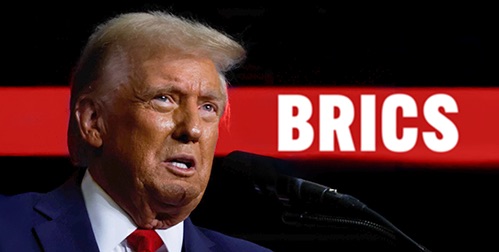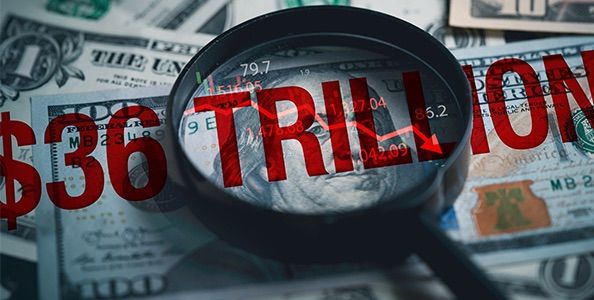- Even as optimism returns to the economy, risks to the commercial real estate sector are increasing.
- The CRE sector is threatened by massive maturing debt, high interest rates, soaring vacancies and declining property values.
- Physical precious metals held in a Gold IRA can offer long-term protection from the impact of a CRE collapse.
CRE Risks Grow
Even as optimism spreads throughout the economy, significant risks remain—or in some cases, are growing. The commercial real estate (CRE) market is on the brink of a financial abyss. The effects will go beyond property owners. The fallout threatens the stability of the broader economy, and the retirement funds of countless Americans.
Crisis in the Making
In November 2024, the delinquency rate for office commercial mortgage-backed securities hit 10.4%. It was near the 10.7% peak during the 2008 financial crisis. This marks the fastest two-year increase on record, climbing 8.8% since 2022. Persistent high vacancy rates and declining rents have accelerated the CRE sector’s severe downturn. Older office buildings have been hit hardest, with property values plummeting by 50% to 70%. In some cases, these properties are now worthless.1

Roots of the Problem
The current crisis stems from several interconnected factors:
Bad Investments and Low Interest Rates: The pandemic’s low interest rates spurred a wave of unsustainable loans. When interest rates rose, borrowers faced soaring debt payments, often doubling or more.
Remote Work and Zoning Restrictions: The rise of remote work has cut demand for office space. Zoning rules have blocked efforts to repurpose office buildings.
Loan Restructuring Strategies: Banks have used “extend and pretend” strategies. They restructured loans to delay addressing financial distress. This “survive till 2025” mindset has dominated the market. But the hoped-for Fed rate cuts are unlikely.
Rising Interest Rates and Mounting Debt
Treasury yields, which influence mortgage rates, have soared. Rising inflation, tariff threats, and a $36 trillion national debt have caused this. The 30-year mortgage rate hit 7.76% in November 2023. It will likely stay above 6% for a while. This has dashed hopes of refinancing. Many properties now face financial distress.2
The debt cliff looms large: $570 billion in commercial loans will mature in 2025, with nearly 40% held by banks. In 2026, $1.8 trillion in loans will mature. Borrowers may see a 75% to 100% rise in debt payments due to high interest rates. This escalates the risk of delinquencies and foreclosures.3
.
 4
4
Systemic Risk to Banks
Regional banks, which hold nearly 70% of CRE loans in the U.S., are particularly vulnerable. CRE loans make up 38% of loan portfolios for banks with under $10 billion in assets. For larger banks, it’s only 12.5%. Tomasz Piskorski, a real estate professor at Columbia, warns of tens of billions in potential banking losses. Regional bank failures could trigger a domino effect. It might destabilize the entire financial system. This could cause deposit outflows, forced asset sales, and systemic risk. The collapse of commercial real estate could push an already fragile banking system into total meltdown.5
Regulatory Challenges and Insurance Costs
Regulatory scrutiny is increasing as the crisis deepens. Meanwhile, inflation and natural disasters are raising insurance costs. This adds to the financial strain. Richard Barkham, CBRE’s chief economist, notes that high interest rates may prevent a market rebound. This could further hurt property owners and lenders.
Implications for Retirement Funds
The CRE sector’s link to the banking system means risks extend to individual retirement funds. Many retirement portfolios include commercial real estate via REITs or other financial tools. Falling property values and rising defaults could harm these investments. This threatens the retirement of millions of Americans. It could also trigger failing banks and crash the stock market.
The Road Ahead
The Counselors of Real Estate, a global group of real estate advisors, projects that financing challenges will persist. Cautious buyers and sellers will keep market activity low. Cap rates, a key metric for property investment returns, are expected to climb, signaling higher risk and lower property values. Regulatory and cost barriers make it hard to convert office space to other uses.
Conclusion
The warning signs in commercial real estate are clear. The sector’s struggles could harm the economy, the banking system, and retirement funds.
In light of these challenges, diversification strategies are more critical than ever. Gold and other precious metals have long been a hedge against economic uncertainty and inflation. As the CRE sector nears a debt cliff, gold can protect your retirement. It offers stability in a volatile market. To learn how physical precious metals held in a Gold IRA can offer long-term security, call us today at 800-462-0071.





 4
4

 3
3



 4
4




